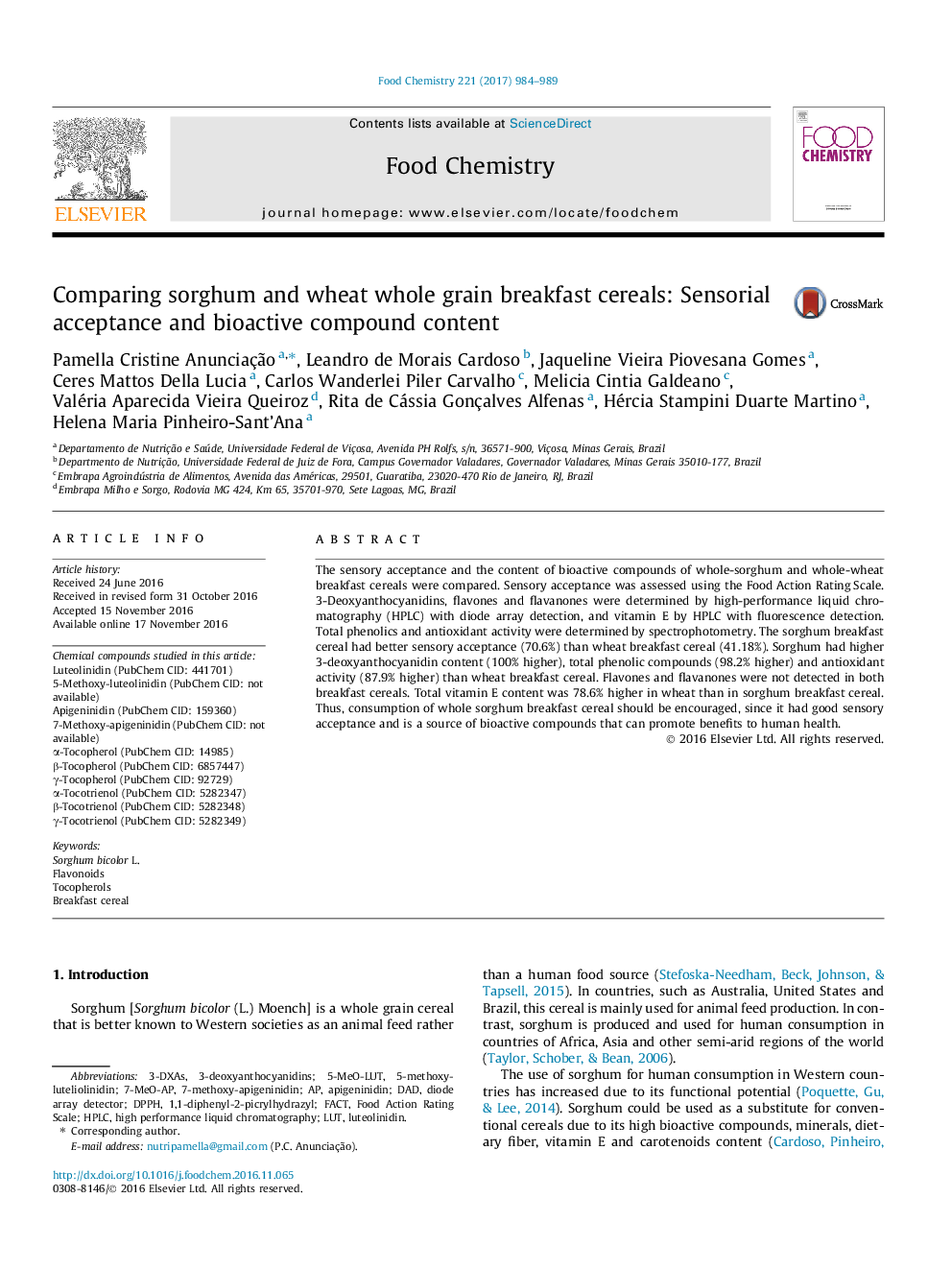| Article ID | Journal | Published Year | Pages | File Type |
|---|---|---|---|---|
| 5133798 | Food Chemistry | 2017 | 6 Pages |
Abstract
The sensory acceptance and the content of bioactive compounds of whole-sorghum and whole-wheat breakfast cereals were compared. Sensory acceptance was assessed using the Food Action Rating Scale. 3-Deoxyanthocyanidins, flavones and flavanones were determined by high-performance liquid chromatography (HPLC) with diode array detection, and vitamin E by HPLC with fluorescence detection. Total phenolics and antioxidant activity were determined by spectrophotometry. The sorghum breakfast cereal had better sensory acceptance (70.6%) than wheat breakfast cereal (41.18%). Sorghum had higher 3-deoxyanthocyanidin content (100% higher), total phenolic compounds (98.2% higher) and antioxidant activity (87.9% higher) than wheat breakfast cereal. Flavones and flavanones were not detected in both breakfast cereals. Total vitamin E content was 78.6% higher in wheat than in sorghum breakfast cereal. Thus, consumption of whole sorghum breakfast cereal should be encouraged, since it had good sensory acceptance and is a source of bioactive compounds that can promote benefits to human health.
Keywords
γ-Tocopherol (PubChem CID: 92729)3-DeoxyanthocyanidinsSorghum bicolor L.LUTβ-Tocopherol (PubChem CID: 6857447)DADDPPH1,1-diphenyl-2-picrylhydrazylα-Tocopherol (PubChem CID: 14985)diode array detectorapigeninidinTocopherolsFACTBreakfast cerealFlavonoidsluteolinidinhigh performance liquid chromatographyHPLC
Related Topics
Physical Sciences and Engineering
Chemistry
Analytical Chemistry
Authors
Pamella Cristine Anunciação, Leandro de Morais Cardoso, Jaqueline Vieira Piovesana Gomes, Ceres Mattos Della Lucia, Carlos Wanderlei Piler Carvalho, Melicia Cintia Galdeano, Valéria Aparecida Vieira Queiroz, Rita de Cássia Gonçalves Alfenas,
